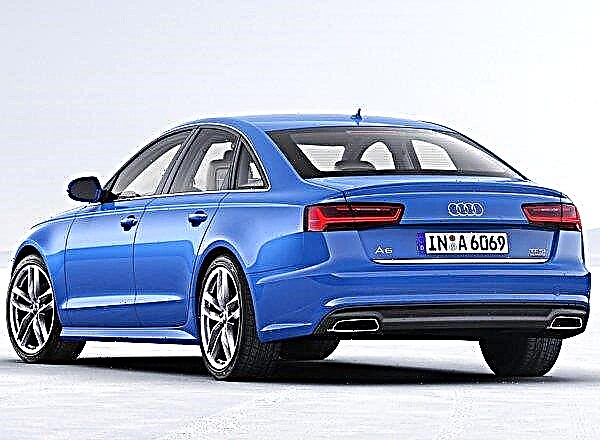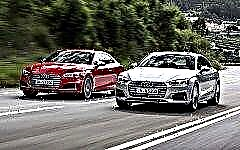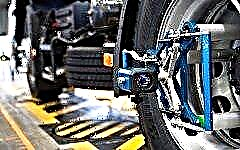

The content of the article:
- What is running-in
- Process features
- Engine running-in after major overhaul
Do I need to run-in the engine, or is it a relic of the past? Most of the drivers do not have a clear answer to this question, but they continue to drive the car “just in case”; the old habit and the desire to play it safe affects. But the younger generation of motorists is increasingly asking the question of whether it is really necessary to run in the engine, because automakers have been convincing consumers of the opposite for more than one year.
What is running-in

In fact, running-in is the operation of the car in a gentle mode - at low speed, limited number of revolutions, without sudden braking, etc. In the process of running-in, the parts are rubbed against each other, the existing irregularities, errors, and inconsistencies are smoothed out. With a hard aggressive driving style, unsuitable parts are damaged, the system is more likely to wear out, the risk of breakdown increases, the engine and other parts of the car are disrupted. And of course, its service life is shortened.
The answer, it would seem, is clear - running in a new car is necessary. But modern technologies make it possible to assemble, according to automakers, a perfectly fitted engine without the slightest inaccuracies and flaws. And there is no need to run it in - the machine is completely ready for use as soon as it comes off the assembly line. But is it?
Of course, a modern foreign car is not a Soviet-made Moskvich. But products that are ideal in all respects do not exist, especially when it comes to complex mechanisms. The latest technologies are capable of a lot, but the laws of physics have not been canceled: a huge number of details interact, making up a single mechanism, and in any case they need to get used to each other. No matter how ideally the piston rings and cylinders are made, their work will reach complete harmony only after a certain period of time.
You should not discount the errors (or even defects) in the process of assembling and manufacturing parts. Even the most sophisticated equipment malfunctions and the most thorough inspection can miss something.
Another important detail is the service life. Modern cars, especially foreign ones, are not designed "for centuries." The average European or American car owner regularly replaces an outdated and worn car model with a new one. And for several years the engine will serve in the best possible way, no matter how loaded it is.
But how many domestic car owners with an average income will be able to change their car regularly? Only attention and respect will help keep the car in excellent condition for many years.
And the last thing. Despite all the assurances of the manufacturers about the senselessness of running-in, the documents for the car almost always indicate that the car should not be loaded at first. Even auto concerns, despite the assurances of many of them in their infallibility, prefer to play it safe.
For example, the BMW company in the documents for its products indicates that for the first thousand or two kilometers the car should work in a sparing mode. This opinion is shared by Alfa Romeo, Dodge and other manufacturers. But BMW can hardly be blamed for using outdated technology or poor-quality assembly. Then the reason is still in the need for grinding in parts.
In any case, before deciding whether or not to run in the engine of a new car, you should carefully study the operating instructions attached to a particular car. And if the manufacturer advises a sparing mode at the beginning of the operational period, it is foolish to ignore this recommendation.
Features of engine break-in

Before starting to operate the car, you should definitely read the instructions and first of all pay attention to the manufacturer's requirements (or lack thereof) for the break-in period. Each model has its own characteristics and no one knows them better than the developer, for example, the required mileage in a gentle mode or the number of revolutions. But one way or another, the basis is the same everywhere.
Things to consider when rolling in an internal combustion engine (internal combustion engine)
- Avoid idling for a long time. Such "execution" is equated by specialists with increased loads.
- Observe the speed limit. Usually, the speed of a car when running in the first 1000 - 3000 km should not exceed 90 km / h.
- The average permissible speed range during running-in is from 2000 to 5000. The exact data are indicated in the documents for the machine.
- Avoid sudden starts and braking. Lapping the brake system in tandem with the propulsion system is also important.
- Do not carry loads during the break-in period. Both on the car itself and in the trailer. The towing of other vehicles is all the more unacceptable. Some people recommend that at first not even sit down passengers.
- Vary your speed. Long driving in one high-speed mode will not allow the elements of the propulsion system to get used to the full. It is best to smoothly change the speed mode throughout the entire process, without going beyond its limitations.
- Try to avoid engine braking. This, like idling, is the same load level as heavy duty use.
- Run on a good asphalt road and preferably out of town. Idleness at traffic lights and the need to constantly jerk the car around corners, intersections and pedestrian crossings is not the best way to run the engine. The same can be said about country roads, gravel roads, etc. Having fallen into the mud, you will definitely not be able to “spare” the car.
- Constantly check the level of oil and other technical fluids. Before picking up the car from the salon, find out from the seller what kind of oil is used in the car and buy 2-3 liters of the same in reserve. If the internal combustion engine system suddenly remains without oil and you do not notice it in time, then the result will be an expensive repair.
The same goes for other liquids. It is desirable that the car has a liter of distilled water, antifreeze, transmission oil, etc. - In addition to the oil level, check the vehicle for leaks. During stops, you should carefully inspect the car.
- Pay attention to the operation of the motor. It is worth listening for extraneous knocks and noises.
- Warm up the engine gradually until it reaches operating temperature. You should start at low speeds, the main thing is that the oil enters the mechanism under sufficient pressure.
- After the mileage reaches 1000-1500 km, it is recommended to change the engine oil and oil filter. In the process of grinding, the parts are ground and all irregularities and deviations are driven away in the form of a kind of shavings, which are washed off with oil and deposited on the filter. To avoid trouble due to contaminated oil mixture and clogged filters, they must be changed in time.
- After the break-in is complete, it is worth doing zero maintenance to make sure everything is in order with the machine. Or identify problems at an early stage.
Engine running-in after major overhaul

The installation of new parts disrupts the natural operation of the system to the point that the engine power is sometimes halved. To restore the original function, the machine must be run-in so that the new parts "come into contact" with the old ones.
The minimum run-in mileage varies from 2 to 4 thousand kilometers.During this period, the main inaccuracies and misalignments are smoothed out, although for complete confidence, you should use the machine carefully for some time and do not overload the engine.
In the process of running-in, uneven parts, traces of machining with a cutter, protrusions and burrs are removed. Unlike a new car, where all the elements of the mechanism are initially adjusted to each other, a car after repair has two sets of parts - old ones with their own characteristics, and new, standard ones. And we will have to work to ensure that they find a common language and begin to function harmoniously.
If the opinion of some car owners that there is no need to run in a new car can be justified, then with regard to cars that have undergone repair, it is definitely wrong.
Features of engine running-in after repair
- When running in, use the engine oil recommended by the manufacturer.
- Before going out on the road, prepare the car - replace the fuel filter, flush and purge the intercooler, adjust the operation of the fuel pump and injectors, remove air from the fuel supply system.
- Check oil pressure at idle speed. It should be between 0.5 and 1 atmosphere.
- Before starting the engine, make sure the battery is fully charged and the starter is working properly.
- Check oil consumption during active break-in. The permissible indicator is 1 liter per 2000-3000 km.
- It is not recommended to pre-wet the oil filter in order to speed up the process of grease entering the system. This can impair the performance of the motor, as an air blockage forms. It is recommended to supply oil through the hole located near the pressure sensor using a pump.
- When starting the engine, observe the readings of the oil pressure sensor. If there is no pressure in the first seconds of operation, stop the engine and check the oil level in the system again.
- Unlike new cars, repaired cars are first run at idle speed. After the engine has been idling for some time, it must be turned off and wait until the temperature drops to 30-40 degrees. Then start again. Repeat the procedure at least 15 times.
- After that, the car can be taken out onto the track. The speed of movement should not exceed 70 km / h for the first 3-4 thousand kilometers, then you can slowly increase to 90-100 km / h. The main part of the preparation ends here, but it is advisable not to overload the engine for the next 10-12 thousand kilometers.
Conclusion on engine running-in
Not so long ago, motorists had to spend a huge amount of time and kilometers on the process of running in an engine. Modern machines do not need such serious preparation, but it is still not worth completely discounting it. And if you are not going to get rid of your car in a couple of years, it is necessary to run the engine in. Whatever updates and the latest technologies are offered to us by carmakers, the ideal technology does not yet exist.











